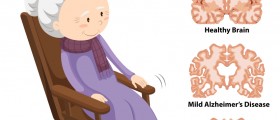
Parkinson’s DiseaseParkinson’s disease is a condition that affects motor system. It is a progressive disease which means that it develops gradually. It is incurable disease that cannot be prevented. Parkinson’s disease mostly affects people over 50 years of age. Men are more susceptible to develop Parkinson’s disease.
Causes of Parkinson’s DiseaseParkinson’s disease results from the loss of brain cells that produce dopamine. Dopamine is a chemical messenger or a neurotransmitter in the brain. Lack of dopamine causes problems with movement. The brain cells responsible for production of dopamine become impaired or die form still unknown reasons.
Possible causes that play a role in development of Parkinson’s disease include:Environmental triggersHereditary factorsFree radicalsAgingCombination of mentioned factors Stages of Parkinson’s Disease
Parkinson’s disease has five stages. Most frequently is used Hoehn and Yahr scale to classify stages of the disease. Each stage is associated to specific symptoms and requires different management. Symptoms of Parkinson’s disease become increasingly severe with every following stage.
Stage I
Stage I is mild or early disease. In this stage symptoms are mild and are considered to be inconvenient but do not disable the sufferer. Tremor or shaking can be present in one of the limbs. Changes in posture, locomotion and facial expression are also present in this stage.
Stage II
Patient with stage II of Parkinson’s disease suffers from minimal disability. Problems with walking and maintaining balance are typically present. At this stage of the disease both sides of the body are affected.
In both stages a patient responds well to medications. Parkinson’s disease medications include: selegiline, an anticholinergic and dopamine agonists such as pramipexole and ropinirole.
Stage III
This stage represents moderate disease. The patient suffers from impaired balance when walking or standing. Both sides of the body are affected and the patient has considerably weakened movements. Stage III is associated with generalized disability that is moderately severe. In this stage the patient receives Parkinson’s disease medication known as levodopa.
Stage IVStage IV is an advanced disease followed by severe symptoms. Walking is significantly limited with presence of rigidity and bradykinesia. The patient cannot complete their daily tasks and live on their own. In this stage, tremors may lessen or disappear.
Stage V
This is the last and final stage of Parkinson’s disease. The disease is fully developed and symptoms are severe. Affected person is unable to stand or walk and is restricted to bed. Cognitive impairment is present too. In this stage the patient requires constant nursing care.

















Your thoughts on this
Loading...